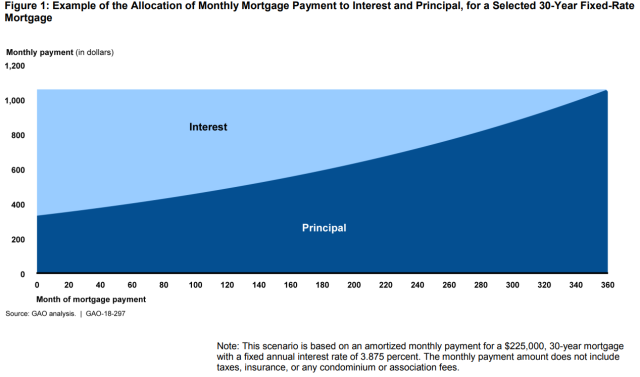Understanding Costs on Equity Release Mortgages
Wiki Article
Exploring the Different Sorts Of Equity Release Mortgages Available Today
Equity Release home mortgages existing numerous alternatives for property owners aged 55 and over. equity release mortgages. These economic products deal with various needs and preferences, allowing individuals to accessibility funds from their property. From lifetime mortgages to shared gratitude home mortgages, each kind offers unique advantages. Comprehending these alternatives is crucial for making informed decisions. What factors should one consider when selecting the most suitable equity Release plan? The information that comply with might shed light on this vital subjectUnderstanding Equity Release Mortgages
Equity Release home loans supply home owners, commonly those aged 55 and over, with a means to access the value locked up in their building without needing to offer it. This economic alternative enables individuals to convert a part of their home equity right into cash, which can be made use of for different functions, such as home improvements, paying off financial debts, or funding retirement.Equity Release can take various forms, yet it basically entails loaning versus the worth of the home while keeping ownership. Homeowners can select to obtain a lump sum or a series of smaller sized repayments, relying on their monetary needs and preferences.Additionally, the amount offered for Release is affected by the residential or commercial property's value, the home owner's age, and details loan provider standards. Generally, recognizing equity Release mortgages is important for homeowners to make enlightened decisions about using their home's equity while taking into consideration the lasting effects.Lifetime Mortgages
Life time home loans stand for one of one of the most preferred kinds of equity Release. This financial product allows home owners, commonly aged 55 or older, to obtain against the worth of their home while preserving possession. The financing, which is protected versus the home, builds up interest in time but does not call for month-to-month payments. Instead, the loan and built up passion are repaid when the property owner passes away or moves into long-lasting care.Lifetime mortgages use flexibility, as consumers can select to obtain a lump sum or go with a drawdown center, accessing funds as needed. Importantly, many strategies featured a no-negative-equity assurance, making sure that debtors will certainly never ever owe even more than the worth of their home. This feature offers peace of mind, allowing people to enjoy their retired life without the concern of depleting their estate. Overall, life time mortgages act as a feasible option for those looking for financial support in later life.Home Reversion Plans

Drawdown Lifetime Mortgages
While numerous property owners seek ways to access their riches, drawdown lifetime mortgages offer an adaptable choice that allows individuals to Release funds slowly. This kind of equity Release home loan enables homeowners to borrow versus the worth of their residential property while maintaining possession. Unlike typical life time mortgages, drawdown strategies enable debtors to access a part of their equity upfront and withdraw added funds as needed, approximately a fixed limit.This feature can be specifically helpful for those who want to manage their finances very carefully, as it reduces passion buildup by only billing rate of interest on the quantities attracted. In addition, drawdown lifetime home loans typically feature a "no adverse equity guarantee," making certain that customers will certainly never ever owe more than their home's worth. This option fits retirees that desire monetary security and flexibility, allowing them to satisfy unanticipated expenses or preserve their way of living without having to market their residential property.Boosted Lifetime Mortgages
Improved Life time Mortgages use distinctive advantages for qualified property owners seeking to Release equity from their residential properties. Recognizing the qualification criteria is crucial, as it determines who can benefit from these specialized financings. It is likewise crucial to examine the prospective downsides linked with boosted alternatives, making certain a well-shaped point of view on their usage.Qualification Requirements Discussed
Recognizing the eligibility requirements for Improved Lifetime Mortgages is crucial for prospective applicants seeking to access the equity in their homes. Normally, applicants should be aged 55 or older, as this age demand is conventional in the equity Release market. Homeowners should possess a residential property valued at a minimum threshold, which can differ by loan provider. Significantly, the building needs to be their primary residence and in excellent problem. Lenders commonly examine the property owner's health and wellness standing, as particular wellness conditions may boost eligibility and advantages. Additionally, applicants need to not have existing significant financial obligations secured against the residential or commercial property. Meeting these standards enables people to explore Improved Lifetime Mortgages as a feasible option for accessing funds connected up in their homes.Advantages of Boosted Mortgages
After clearing up the qualification criteria, it comes to be obvious that Enhanced Lifetime Home loans supply a number of significant advantages for house owners looking to take advantage of their residential or commercial property equity. Largely, they give accessibility to a larger funding quantity contrasted to basic lifetime home loans, profiting those with wellness conditions or age-related aspects that raise their life expectancy threat. This enhanced borrowing ability enables house owners to satisfy different economic demands, such as home renovations or retired life costs. Furthermore, these home loans commonly feature adaptable payment options, enabling borrowers to manage their funds much more efficiently. The no-negative-equity guarantee further assures that house owners will certainly never owe more than their residential or commercial property's value, supplying assurance. Generally, Improved Lifetime Home mortgages present a compelling alternative for eligible homeowners looking for financial solutions.Possible Downsides Thought About
While Improved Lifetime Home mortgages provide numerous benefits, potential downsides call for careful factor to consider. One significant problem is the effect on inheritance; the equity released lowers the value of the estate entrusted to beneficiaries. Additionally, these home loans can accrue considerable interest gradually, resulting in a substantial financial obligation that may go beyond the original financing amount. There might also be limitations on home alterations or rental, limiting house owners' flexibility. Improved products usually require certain wellness problems, implying not all property owners will certainly certify. Taking care of the costs and charges connected with these home loans can be complicated, possibly leading to unexpected expenses. Consequently, individuals ought to completely examine their circumstance and get in touch with economic experts before proceeding.Shared Appreciation Mortgages
Shared Appreciation Mortgages represent a distinct financial arrangement that permits home owners to access equity while sharing future residential property value boosts with the loan provider. This technique supplies prospective benefits such as lowered month-to-month payments, but it additionally includes drawbacks that must be very my website carefully considered. Understanding the eligibility requirements is essential for those thinking about this option.Principle Introduction
Equity Release home loans, particularly in the form of common gratitude home mortgages, provide home owners a special financial remedy that allows them to accessibility funds by leveraging the worth of their residential or commercial property. In this plan, a lender offers a finance to the home owner, which is normally paid off with a share of the residential property's future appreciation in worth. This suggests that when the home owner offers the building or dies, the loan provider obtains a percentage of the boosted worth, instead of simply the first car loan quantity. Shared admiration home loans can be appealing for those looking to supplement their earnings or financing considerable expenditures while preserving ownership of their home. Nevertheless, the monetary ramifications of common admiration must be thoroughly thought about by prospective debtors.Advantages and Disadvantages
Although shared appreciation mortgages can provide considerable monetary advantages, they also come with notable downsides that potential borrowers should consider. These home loans allow homeowners to accessibility equity in their residential properties while sharing a part of any future admiration with the loan provider. This arrangement can be useful during times of climbing residential property values, using significant funds without regular monthly settlements. The primary drawback is the prospective loss of equity; home owners may finish up with substantially reduced inheritance for beneficiaries. In addition, the complexity of the terms can result in misunderstandings relating to repayment responsibilities and the portion of admiration owed. It is essential for consumers to weigh these elements very carefully prior to dedicating to a shared recognition home loan.
Eligibility Needs
What standards must homeowners fulfill to get a common appreciation mortgage? Primarily, candidates must go to the very least 55 years of ages, assuring they are within the target market for equity Release items. In addition, the property must be their key house and normally valued above a specified minimum threshold, often around ? 100,000. Lenders additionally examine the homeowner's financial conditions, consisting of income and outstanding financial debts, to ascertain they can take care of the home loan responsibly. Notably, the building has to be in good problem and without substantial lawful encumbrances. House owners ought to additionally have a clear understanding of the terms, including just how gratitude will be shared with the loan provider upon sale or transfer of the residential or commercial property, as this influences general returns.Selecting the Right Equity Release Choice

Frequently Asked Concerns
What Age Do I Need to Be for Equity Release?
The age need for equity Release usually starts at 55 for the majority of strategies. However, some suppliers may supply choices for those aged 60 and above, showing differing terms based on private conditions and lending institution plans.Will Equity Release Affect My Inheritance?
Equity Release can influence inheritance, as the quantity obtained plus passion minimizes the estate's worth. Successors might receive less than expected, depending on the property's recognition and the overall debt at the time of passing.Can I Move Home With Equity Release?
The inquiry of relocating residence with equity Release occurs often. Generally, individuals can move their equity Release strategy to a new property, but specific conditions may apply, calling for examination with the loan provider for support.Are There Charges Related To Equity Release Mortgages?
Charges connected with equity Release mortgages can consist of arrangement fees, evaluation fees, and lawful costs. Additionally, there may be very early settlement charges, which can affect the overall expense and monetary ramifications for the customer.Exactly How Does Equity Release Impact My Tax Situation?
Equity Release can impact one's tax situation by potentially raising taxable earnings, as released funds are thought about funding. Nonetheless, it generally does not incur instant tax obligation liabilities, making it important to get in touch with an economic expert for customized assistance.Conclusion
In summary, the variety of equity Release home mortgages readily available today supplies house owners aged 55 and over several pathways to access their building's worth - equity release mortgages. Whether going with a life time home mortgage, home reversion strategy, or various other options, each option provides distinctive benefits tailored to specific monetary requirements. Mindful consideration and assessment with a monetary advisor are vital to ensure the chosen equity Release solution lines Related Site up with individual objectives and economic scenarios, eventually promoting informed decision-making for a secure financial future. Equity Release home loans present numerous choices for homeowners aged 55 and over. Equity Release home loans offer property owners, typically those aged 55 and over, with a means to access the worth tied up in their residential property without requiring to offer it. Improved Life time Home mortgages provide unique advantages for eligible property owners seeking to Release equity from their homes. Equity Release mortgages, especially in the form of shared gratitude home loans, use home owners a distinct economic service that enables them to accessibility funds by leveraging the worth of their home. In recap, the range of equity Release mortgages readily available today uses homeowners aged 55 and over multiple paths to access their residential or commercial property's worthReport this wiki page